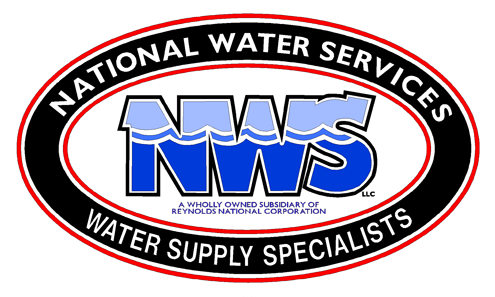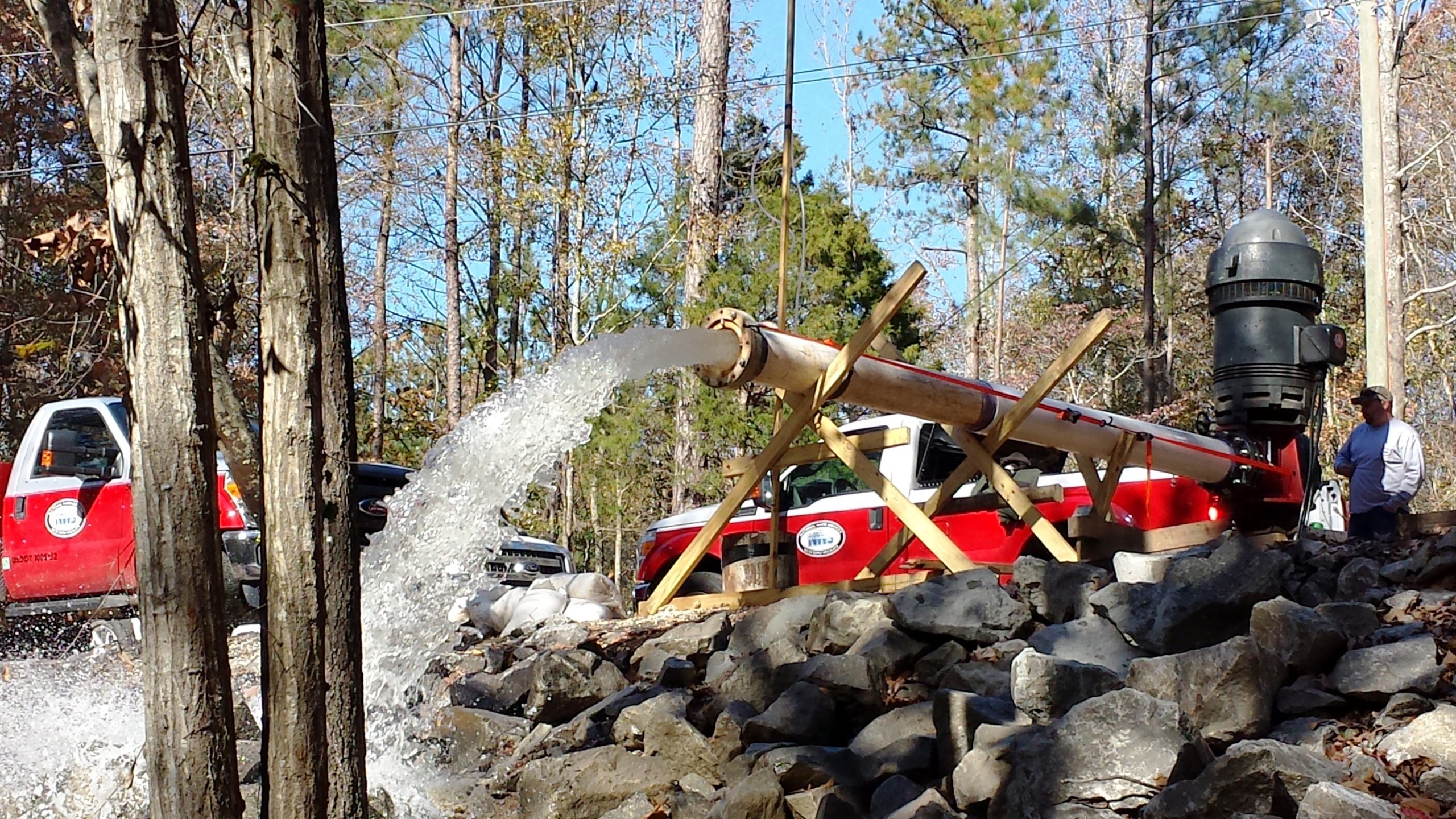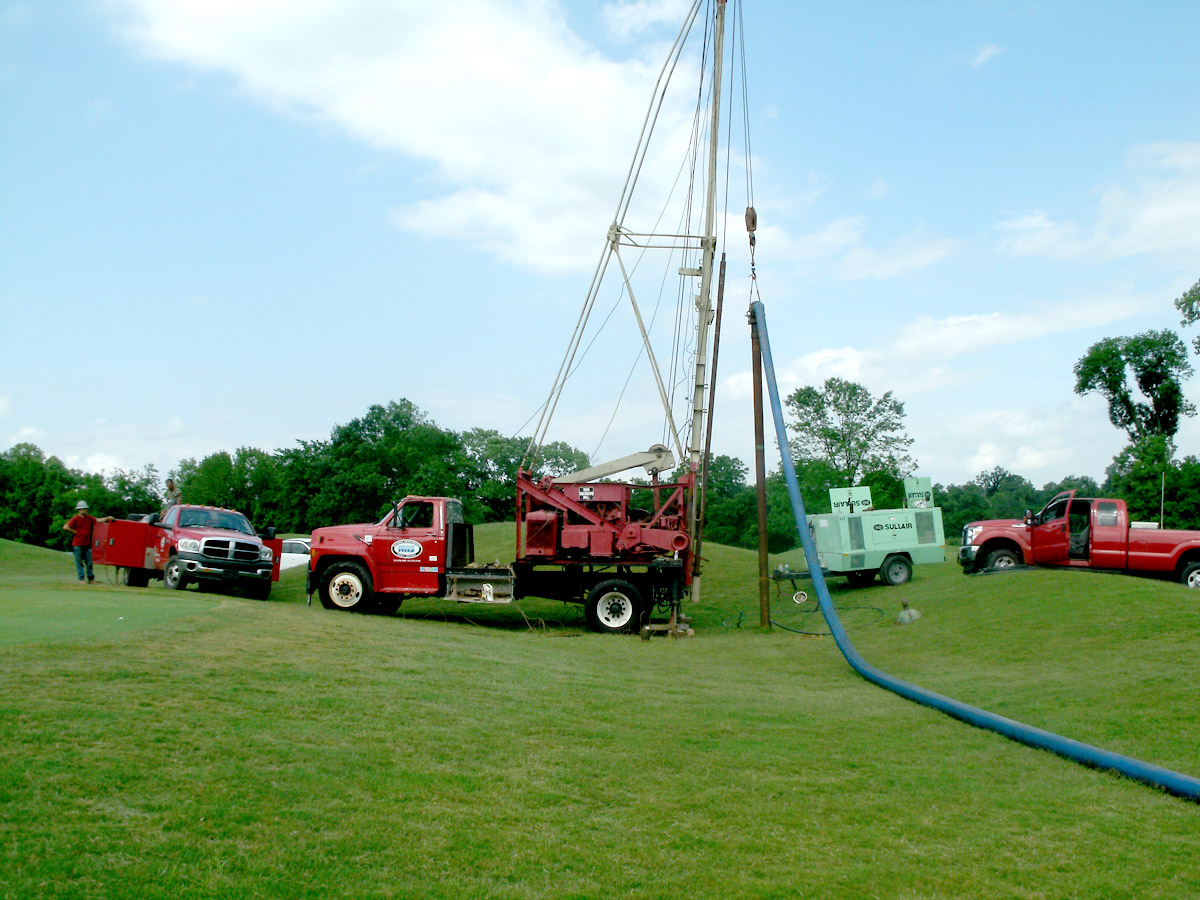Water well cleaning and rehabilitation are the best procedures to maximize well efficiency.
Water wells require periodic maintenance to maintain their efficiencies (Specific Capacity). Specific Capacity of a well is its yield per unit of drawdown after a given time has elapsed. It is usually expressed as gallons of water per minute per foot of drawdown (gpm/ft). Well rehabilitation is the art of thoroughly cleaning the well screen, gravel pack, and natural formation to raise the Specific Capacity to as high a value as possible. When a well is new and developed properly, it should have an efficiency approaching 100 percent. After the well is placed in production, there is usually an initial period in which the efficiency remains constant. Eventually, the Specific Capacity is reduced and well cleaning is required. If the rehabilitation in not fully effective, the periods between cleaning become shorter and the degree of restoration less. Normal acidization and mechanical well cleaning methods have proven to be ineffective in many cases. The ineffectiveness results in frequent cleanings and eventual abandonment of wells long before the well screen and casing have deteriorated.
Cleaning Methods
Static Tank Flush: The lest effective method because you are not employing a mechanical agitation or pressure to assist in the breakdown and dispersion of encrustations or sand production.
Twin Disk Surge Process: Twin disk surge equipment is lowered into the well and operated in an up and down motion in the casing and screen. this is similar to a piston in a cylinder. On the down stroke, water is forced outward into the formation. Water, silt and fine sand are then pulled into the well during the upstroke. Air is then used to lift the sediment out of the well.
Mechanical and Air Surging: After the screen and casing are set, the well is then developed by a surging process with a double disc tool and augmented with compressed air. This technique can remove much fine material from the screen and formation area. This activity is then coupled with chemical additives that help to break down clays and fines that prove resistant to removal and greatly enhances the mechanical efficiency of the well.
High Velocity Jetting: One of the most effective methods of well development involves the use of water jetting at high velocity onto and through the screen. The forceful action of the jets working out through the screen opening, agitates and rearranges the formation surrounding the screen. This process utilizes an integral 3,600 gallon tank and can inject chemicals at infinitely variable rates up to 5,000 gallons per minute at up to 90psi. In conjunction with the High Velocity Injection equipment, custom blends of chemicals are used for each type of well and well treatment. The specific blend is determined by the results obtained after the well is given a mineral analysis of its yielded ground. This method also may correct the damage to the formation resulting from drilling.


